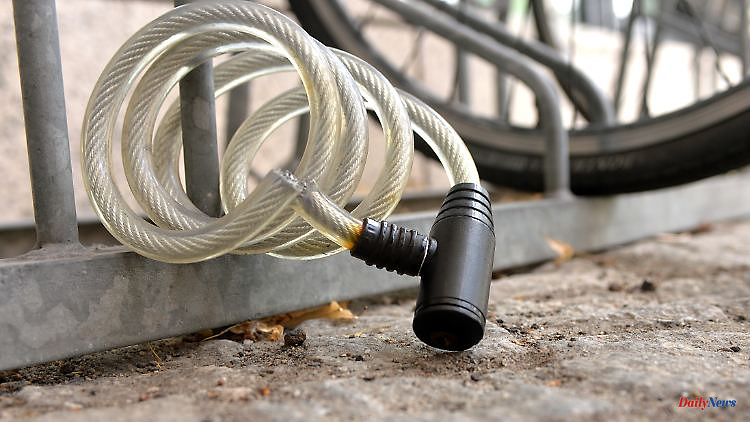Many people have already become victims of bicycle thieves. But what actually happens to the stolen bikes? A research team wants to solve the mystery - and prepares a hundred bicycles in Amsterdam with transmitters. The result surprised the scientists themselves.
More than 200,000 bicycles are stolen in Germany every year. Almost everyone has been affected by it or knows someone to whom this has happened. But what actually happens to the stolen bikes? Are they transported abroad? Or do they stay in the area where they were stolen? A research team wanted to find out. As a test area, it chose one of the most bicycle-friendly cities in the world: Amsterdam.
According to the study published in the specialist magazine "PLOS ONE", the number of bicycles in Amsterdam is around 850,000. According to different estimates, tens of thousands of them are stolen every year. In order to track down the stolen bicycles, the researchers equipped 100 used bikes with tracking devices and then connected them to public places. From June 2021 to November 2021, they finally tracked what was happening to the bikes on the computer.
And the bicycle thieves did bite: in the six months examined, 70 of the 100 prepared bicycles were stolen. This theft rate was higher than the estimated Amsterdam average. The researchers suspect the reason for this is that all test bikes were parked in public places.
But what happened to the bikes after the theft? In fact, 68 of the 70 stolen bikes, the vast majority, stayed in Amsterdam. Of these, three to six were located near second-hand bike shops for a while - the researchers suspect that they were sold there again. Another twelve bikes have been linked to places where bikes are sold on the black market.
The researchers also found strikingly similar movement patterns in 22 of the stolen wheels. They therefore suspect one and the same "underground network" in which these bikes were moved after the theft. However, the fate of other wheels remained unclear.
The fact that most of the stolen bicycles remained in the city puzzled even the scientists. "I think the most surprising thing was that it happened locally," said study co-author Fabio Duarte, according to a statement from the Massachusetts Institute of Technology (MIT). "If they are stolen and sold, the new owner will use the bike in the same areas, probably without knowing it was stolen." To protect privacy, the team stopped wheel tracking as soon as a movement pattern indicated an unsuspecting user.
However, the data from the study were not used to track down bicycle thieves. At the same time, the researchers forwarded their findings to those departments of the city administration that want to take action against the problem of bicycle theft. According to the researchers, the data on mobility patterns obtained in the study could also be useful in urban design.
According to crime statistics, a total of almost 234,000 reports of stolen bicycles were made in Germany in 2021 - however, the number of unreported cases is assumed to be higher because not all cases are reported. After there was a temporary decrease in bicycle thefts during the corona pandemic due to lockdowns and working from home, individual federal states reported an increase again after many measures were relaxed.












